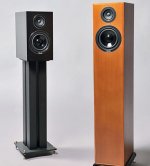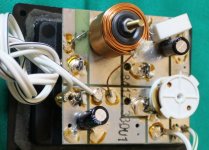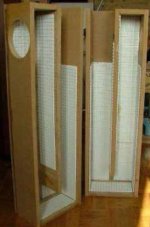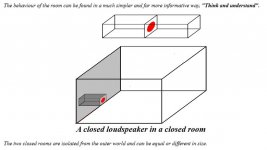I can design you a TL for a driver of your choice (assuming it works well in a TL) which in this case would be the TL/woofer part of a 3-way. I could design the whole cabinet for a 2-driver, 2-way, however, since the tweeter would/could share the same total cabinet volume with the woofer. I don't design my own crossovers as I have fellow DIYers who have the equipment and expertise to do so much better than I could, so you'd have to do the remainder of the cabinet design and either design the crossover yourself or get someone's help for that. I'm not sure what you mean when talking about "swapping out any speaker", however.
Paul
Paul
Yes if you think what I have chosen would be a good combination then I'd love you to design a 3 way cabinet, if you think I should swap out any speaker then just let me know what you what would be a better option and thank you again!
Lee
You often detect threads drifting off into nothingness. This seems like one. 
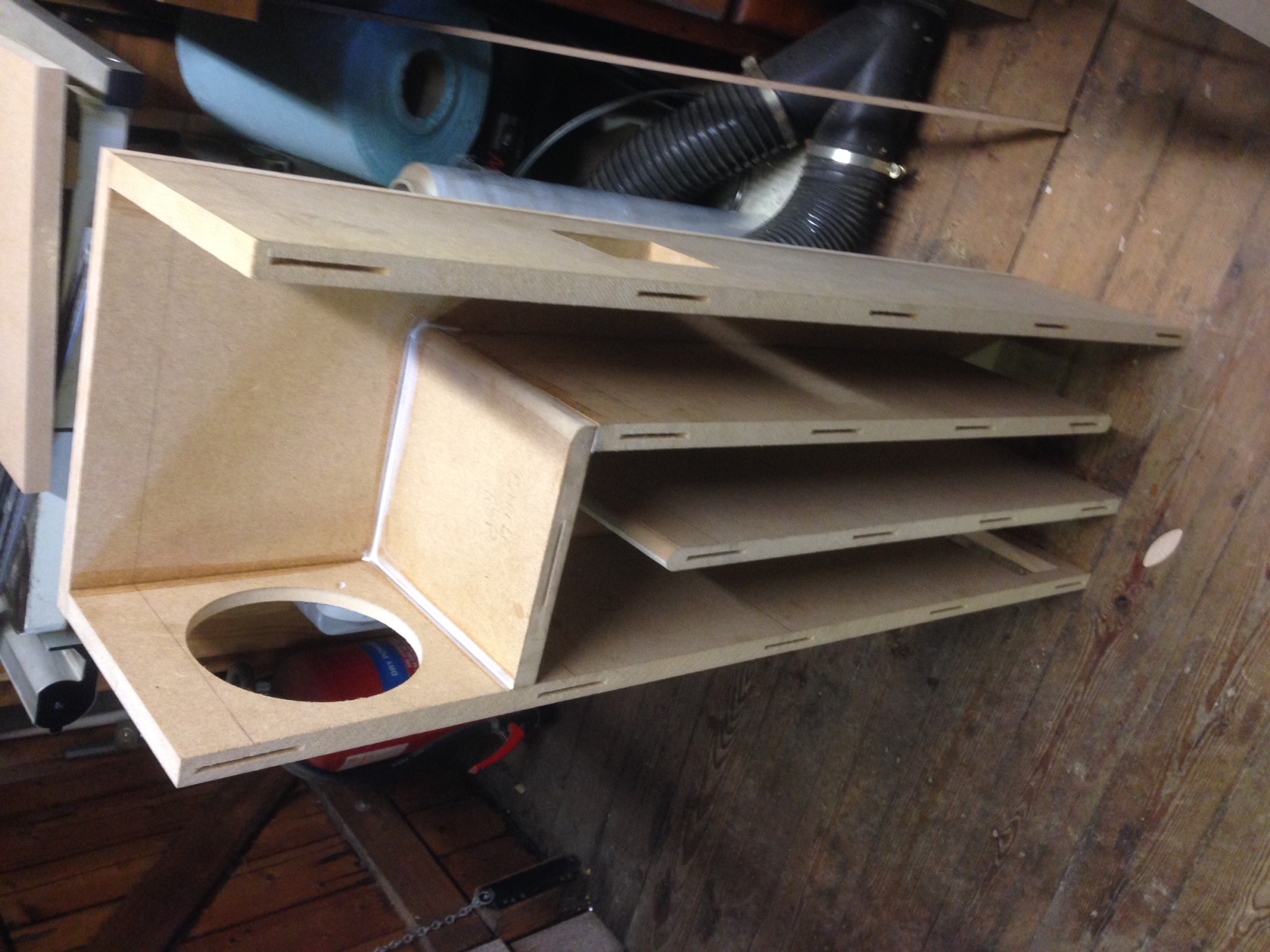
Perhaps we could use this cabinet for an 8" bass, since it is apparently too big for a 6".
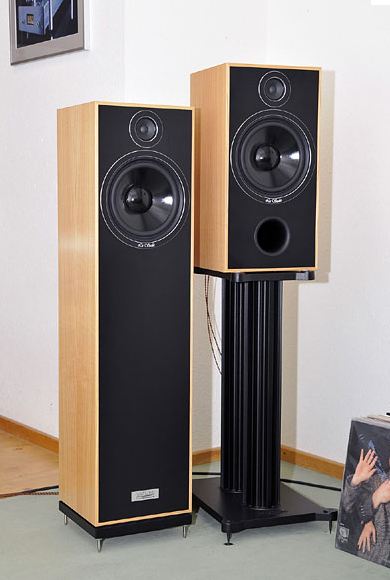
W 200 S - 4 Ohm
Does that bass fit? The rest is just technique.

Perhaps we could use this cabinet for an 8" bass, since it is apparently too big for a 6".

W 200 S - 4 Ohm
Does that bass fit? The rest is just technique.
You often detect threads drifting off into nothingness. This seems like one.
Perhaps we could use this cabinet for an 8" bass, since it is apparently too big for a 6".
W 200 S - 4 Ohm
Does that bass fit? The rest is just technique.
8" wouldn't fit Steve unfortunately, I have put the cones back into the Missions now and I'll sell those I will try to work out what to do with the carcasses...
Lee
TBH, Seaco, I wouldn't listen to the so-called experts at diyaudio at all.
They seem to be pouring water on a nice transmission line.
6 inch bass is a hard speaker to do. It has a midrange shout on a narrow baffle that is quite irritating. But bass loading is a much more moveable feast. Why sweat?
Troel's design addresses a lot of the balance issues:
Ellam-XT
The real problem with 6 inch bass is that it doesn't usually roll off too well or steeply. Hence needs a lot of crossover work. Something commercial designs usually avoid in favour of cheapness.
They seem to be pouring water on a nice transmission line.
6 inch bass is a hard speaker to do. It has a midrange shout on a narrow baffle that is quite irritating. But bass loading is a much more moveable feast. Why sweat?
Troel's design addresses a lot of the balance issues:
Ellam-XT
The real problem with 6 inch bass is that it doesn't usually roll off too well or steeply. Hence needs a lot of crossover work. Something commercial designs usually avoid in favour of cheapness.
They seem to be pouring water on a nice transmission line.
I wouldn't call it nice… i'd call it a classic line, but without the advantage of actually being tuned to the Fs. One can do a lot better than that today.
Transmission Line Speakers Read Me
dave
Lee,
You are experimenting by swapping, boxes, drivers and xo parts; that can take years, it's expensive and ultimately won't end well.
There are 100s of proven designs out there, decide what you want and what is the budget.
Glad that you started with a MDF box; low cost and a good learning experience.
Also MDF is SO easy to work with, you can run it back though the saw --remove a side, and/or cut disk to fill in holes, etc.
However, as stated in the thread there are many parameters to consider.
My stick with 2-ways or MTM's
stick with 2-ways or MTM's
Doug
You are experimenting by swapping, boxes, drivers and xo parts; that can take years, it's expensive and ultimately won't end well.
There are 100s of proven designs out there, decide what you want and what is the budget.
Glad that you started with a MDF box; low cost and a good learning experience.
Also MDF is SO easy to work with, you can run it back though the saw --remove a side, and/or cut disk to fill in holes, etc.
However, as stated in the thread there are many parameters to consider.
My
 stick with 2-ways or MTM's
stick with 2-ways or MTM's Doug
You sure sound like you're calling yourself an expert and I assume you're calling me a "so-called" expert. I have never claimed to be an expert at anything but I am able to design high-performing and great-sounding TLs darn well using Martin King's software. Using an existing TL design and randomly changing drivers and hoping for the best will often be a fool's errand. The design Seaco started to build is not a good design for the reasons I initially listed. One can do much, much better.
Paul
Paul
TBH, Seaco, I wouldn't listen to the so-called experts at diyaudio at all.
They seem to be pouring water on a nice transmission line.
6 inch bass is a hard speaker to do. It has a midrange shout on a narrow baffle that is quite irritating. But bass loading is a much more moveable feast. Why sweat?
Troel's design addresses a lot of the balance issues:
Ellam-XT
The real problem with 6 inch bass is that it doesn't usually roll off too well or steeply. Hence needs a lot of crossover work. Something commercial designs usually avoid in favour of cheapness.
What I know about transmission lines is culled mostly from wiki. 
https://en.wikipedia.org/wiki/Loudspeaker_enclosure#Transmission_line
Seems to me there are a lot of theories about them, I'm sure a carefully designed project can yield good results. The surprise in audio is that some pretty ropey designs can sound good too.
Quarter wave, 1/8 wave, an' all that.
Since Seaco has done all the hard work with the cabinet below, a decent speaker crossover like the Fs 30Hz Ellam XT should hit most of the right notes.
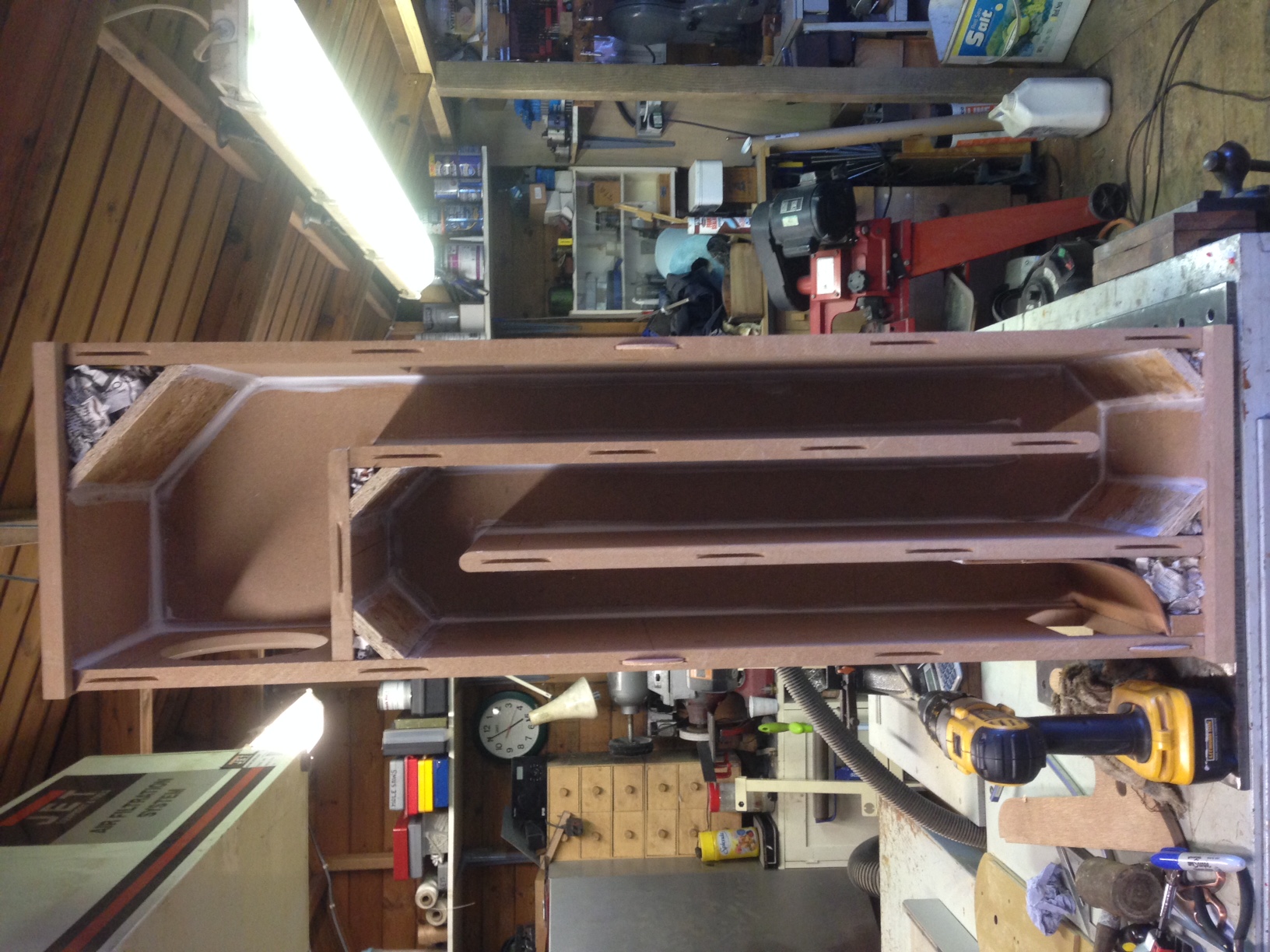
Perhaps you could explain what is the right Qts for the TL driver, Paul. You seem to be calculating a 1/8 wave (5 feet line) based on the 30Hz Fs. Just trying to follow. IIRC, the idea is the line is tuned below the bass Fs to add something.
But mainly, I think the perfect is the enemy of the good. Because it never arrives. A simple recommendation to saw off a third of the cabinet would be good. Otherwise it's depressingly back to the drawing board. And probably abandonment of a fun project which I would happily take on.
TBH, I suspect that improving the Mission 702e really involves crossover work more than cabinet work.
https://en.wikipedia.org/wiki/Loudspeaker_enclosure#Transmission_line
Seems to me there are a lot of theories about them, I'm sure a carefully designed project can yield good results. The surprise in audio is that some pretty ropey designs can sound good too.
Quarter wave, 1/8 wave, an' all that.
Since Seaco has done all the hard work with the cabinet below, a decent speaker crossover like the Fs 30Hz Ellam XT should hit most of the right notes.

Perhaps you could explain what is the right Qts for the TL driver, Paul. You seem to be calculating a 1/8 wave (5 feet line) based on the 30Hz Fs. Just trying to follow. IIRC, the idea is the line is tuned below the bass Fs to add something.
But mainly, I think the perfect is the enemy of the good. Because it never arrives. A simple recommendation to saw off a third of the cabinet would be good. Otherwise it's depressingly back to the drawing board. And probably abandonment of a fun project which I would happily take on.
TBH, I suspect that improving the Mission 702e really involves crossover work more than cabinet work.
The Qts range for a driver to work really well in a TL, as I've found over the last 14 years designing TLs for myself, others and a couple of commercial speaker manufacturers, is 0.35 to 0.50, although it's quite possible to get reasonably acceptable but not great results with other Qts values. And, the optimum system tuning frequency, 1/4-wave resonant frequency for instance, is dependent on both Fs and Qts. With Qts equal or close to 0.4, tuning to Fs works well. If Qts is less than 0.4, the tuning needs to be higher than Fs, and if Qts is larger than 0.4, tuning needs to be lower than Fs.
There are many variations on TLs, one of which is mass-loaded (ML-TL). Its tuning has two contributors, the 1/4-wave resonance from the line's length and from a port. That's what I modeled for the D8.8 driver and why you didn't understand why the line is only 60" long, which would make its 1/4-wave resonance ~56 Hz, not low enough by itself to properly tune the system. A 10:1 tapered TL with the same length has a similar but not quite as good of a response and would be more difficult to build.
While I applaud your willingness to take on what might be a problematic design, I simply don't think that's a good idea to recommend to a person apparently far less familiar with what's necessary to get good results. I do stand behind my original comments that the design seaco chose to emulate has at least one serious deficiency; even for the original woofer, it's located at or near the very beginning of the line and will result in a very lumpy response with some really big dips. The only way to minimize them is to stuff the line heavily and/or along its whole length, and that will completely kill the output from its terminus, resulting in what amounts to very complicated box that acts like it's sealed. To further suggest trying random drivers in it is not going to give good results. Oh, it will certainly play music and seaco would probably be very proud of his handiwork, but there's little chance it would actually be good. I could model a line with a constant cross-sectional area ~105" long Its 1/4-wave resonance would be 32 Hz, making it optimum for the D8.8 woofer, but I know without even trying the response shape would be really ugly even with the woofer located optimally further down the line.
Last comment: I wouldn't believe anything on wikipedia, and there are still a number of TL myths that first-timers buy into, no matter the source.
Paul
There are many variations on TLs, one of which is mass-loaded (ML-TL). Its tuning has two contributors, the 1/4-wave resonance from the line's length and from a port. That's what I modeled for the D8.8 driver and why you didn't understand why the line is only 60" long, which would make its 1/4-wave resonance ~56 Hz, not low enough by itself to properly tune the system. A 10:1 tapered TL with the same length has a similar but not quite as good of a response and would be more difficult to build.
While I applaud your willingness to take on what might be a problematic design, I simply don't think that's a good idea to recommend to a person apparently far less familiar with what's necessary to get good results. I do stand behind my original comments that the design seaco chose to emulate has at least one serious deficiency; even for the original woofer, it's located at or near the very beginning of the line and will result in a very lumpy response with some really big dips. The only way to minimize them is to stuff the line heavily and/or along its whole length, and that will completely kill the output from its terminus, resulting in what amounts to very complicated box that acts like it's sealed. To further suggest trying random drivers in it is not going to give good results. Oh, it will certainly play music and seaco would probably be very proud of his handiwork, but there's little chance it would actually be good. I could model a line with a constant cross-sectional area ~105" long Its 1/4-wave resonance would be 32 Hz, making it optimum for the D8.8 woofer, but I know without even trying the response shape would be really ugly even with the woofer located optimally further down the line.
Last comment: I wouldn't believe anything on wikipedia, and there are still a number of TL myths that first-timers buy into, no matter the source.
Paul
What I know about transmission lines is culled mostly from wiki.
https://en.wikipedia.org/wiki/Loudspeaker_enclosure#Transmission_line
Seems to me there are a lot of theories about them, I'm sure a carefully designed project can yield good results. The surprise in audio is that some pretty ropey designs can sound good too.
Quarter wave, 1/8 wave, an' all that.
Since Seaco has done all the hard work with the cabinet below, a decent speaker crossover like the Fs 30Hz Ellam XT should hit most of the right notes.

Perhaps you could explain what is the right Qts for the TL driver, Paul. You seem to be calculating a 1/8 wave (5 feet line) based on the 30Hz Fs. Just trying to follow. IIRC, the idea is the line is tuned below the bass Fs to add something.
But mainly, I think the perfect is the enemy of the good. Because it never arrives. A simple recommendation to saw off a third of the cabinet would be good. Otherwise it's depressingly back to the drawing board. And probably abandonment of a fun project which I would happily take on.
TBH, I suspect that improving the Mission 702e really involves crossover work more than cabinet work.
Last edited:
Thanks for that, Paul. I think I got egg on my face there, and nothing wrong with that! It's how we learn. 
Any idea how Seaco might rescue his cabinet, with a bit of sawing and chiselling?
Crossover-wise, this circuit is quite good for 6" bass. I doubt if Mission have done anything so good. But even that can be improved with a midrange notch.
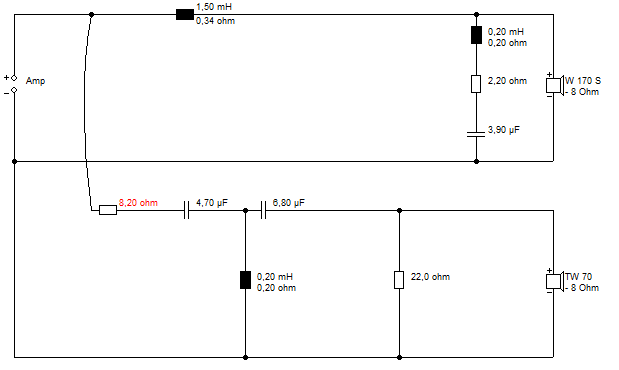
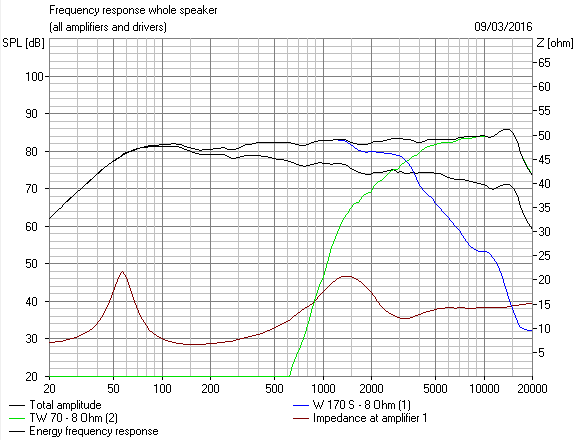
Any idea how Seaco might rescue his cabinet, with a bit of sawing and chiselling?
Crossover-wise, this circuit is quite good for 6" bass. I doubt if Mission have done anything so good. But even that can be improved with a midrange notch.


What would really be neat and interesting would be to model an optimum line for the midwoofer in seaco's Mission speakers. I'd be happy to do that but I'd need the T/S values for that driver to do it properly.
Paul
Paul
Thanks for that, Paul. I think I got egg on my face there, and nothing wrong with that! It's how we learn.
Any idea how Seaco might rescue his cabinet, with a bit of sawing and chiselling?
Crossover-wise, this circuit is quite good for 6" bass. I doubt if Mission have done anything so good. But even that can be improved with a midrange notch.


I doubt you'll rustle up an Fs beyond it being (guesses) 30-40Hz and QTs around 0.4. 6" kevlar or polycone. Called a Cf160/78 part number. Polydome tweeter.
Other people have done this TL conversion to the 702e:
I dug up the filter too. 2mH and 6.8uF bass, I'd guess. Seems like a 8 ohm unit, but quite conceivably a 4 ohm bass, worth measuring.
Other people have done this TL conversion to the 702e:
Mission 702e Review | Converted to transmissionn line!I bought a pair of these a few years ago for £100 and immediately got a jig saw to the backs and converted them to "transmission line" speakers a la IPL acoustics. It opened them out tremendously and dramatically increased the bass response - and I'm talking about 32ft organ pipe fundamentals shaking the house! They give extremely accurate positioning of instruments / vocalists etc. OK, this is not a normal review but I just wanted to point out what is possible to achieve with a relatively cheap pair of floor standers and some limited woodworking skills !
I dug up the filter too. 2mH and 6.8uF bass, I'd guess. Seems like a 8 ohm unit, but quite conceivably a 4 ohm bass, worth measuring.
Attachments
The T/S parameters needed are not only Fs but also Re, Le, Bl, Sd, Vas, Qes and Qms. In the past, and I suspect this also applies to the linked TL conversion, most lines were designed based solely on Fs, which isn't going to get the job done nearly as well as it can be.
I doubt you'll rustle up an Fs beyond it being (guesses) 30-40Hz and QTs around 0.4. 6" kevlar or polycone. Called a Cf160/78 part number. Polydome tweeter.
Other people have done this TL conversion to the 702e:
Mission 702e Review | Converted to transmissionn line!
I dug up the filter too. 2mH and 6.8uF bass, I'd guess. Seems like a 8 ohm unit, but quite conceivably a 4 ohm bass, worth measuring.
Unfortunately Tony's design was far from optimum, despite its name. This thread from 2007, particularly the posts by Planet10 and Scottmoose, will explain why:
http://www.diyaudio.com/forums/multi-way/107201-humble-homemade-optimo-loudspeaker.html
Paul
http://www.diyaudio.com/forums/multi-way/107201-humble-homemade-optimo-loudspeaker.html
Paul
AW, sounds like the perfect is never going to arrive. I looked up the optimo at HumbleHomemadeHiFi.
Scanspeak 18W woofer. 33 Hz Fs. 190cm untapered line. Simple as that. Tony Gee likes it.
I admire your willingness to stay in the thread, Paul, even when you are taking a beating.
My own view is that all bass loadings are compromised. NOBODY at diyaudio.com wants to discuss Steen Duelund's brilliant ideas about the room and the box.
But I got it. Trade-offs in a word.
My own view is that all bass loadings are compromised. NOBODY at diyaudio.com wants to discuss Steen Duelund's brilliant ideas about the room and the box.
But I got it. Trade-offs in a word.
Attachments
I don't feel like I'm taking a beating in the least. And, yes, every single design, no matter what it's based on, has compromises. Tony may have been more concerned about midrange response than squeezing the most bass out he could, and there's nothing inherently wrong with that, but others not really knowledgeable/experienced about the technical issues can and have been misled on trying to emulate that and other designs inappropriately.
And, yes, every single design, no matter what it's based on, has compromises. Tony may have been more concerned about midrange response than squeezing the most bass out he could, and there's nothing inherently wrong with that, but others not really knowledgeable/experienced about the technical issues can and have been misled on trying to emulate that and other designs inappropriately.
Paul
Paul
I admire your willingness to stay in the thread, Paul, even when you are taking a beating.
My own view is that all bass loadings are compromised. NOBODY at diyaudio.com wants to discuss Steen Duelund's brilliant ideas about the room and the box.
But I got it. Trade-offs in a word.
What I expect from you, Paul, being the TL man, is a simple recommendation that gives Seaco the best chance of making his "Go for it" design work with a 6" bass..I don't feel like I'm taking a beating in the least.And, yes, every single design, no matter what it's based on, has compromises. Tony may have been more concerned about midrange response than squeezing the most bass out he could, and there's nothing inherently wrong with that, but others not really knowledgeable/experienced about the technical issues can and have been misled on trying to emulate that and other designs inappropriately.
Paul

Shorter line presumably, but really this isn't my area of expertise. I really despair of the perfectionist who thinks that any optimum solution exists. All is compromise with speakers.
- Status
- This old topic is closed. If you want to reopen this topic, contact a moderator using the "Report Post" button.
- Home
- Loudspeakers
- Multi-Way
- Just gone for it!
